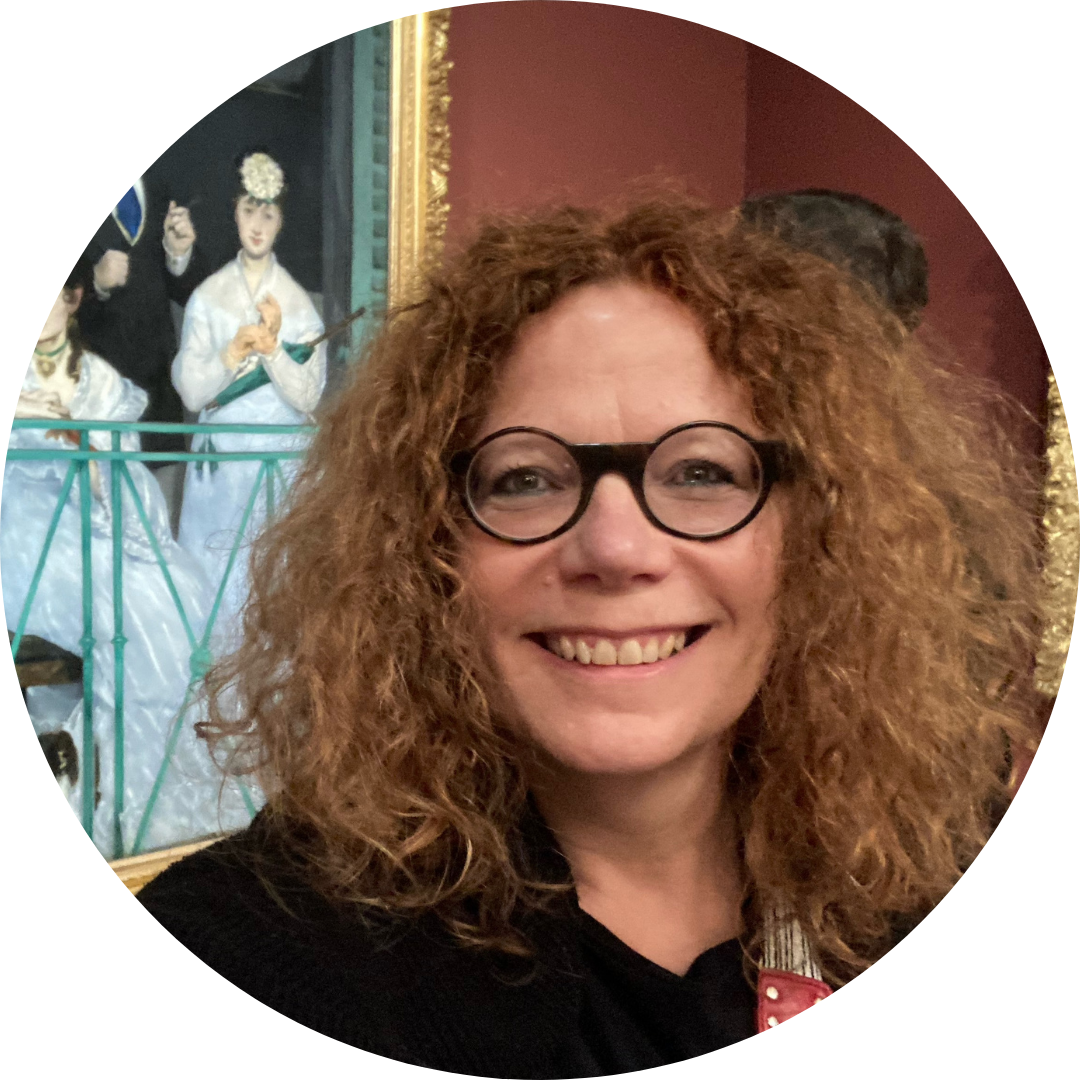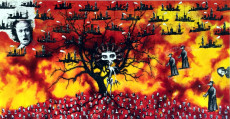
Bernard Gaube looks himself in the face

About the “Hunimalité” exhibition on view until March 22, 2024 at L’ahah #Griset in Paris.
This painter is said to be rare. And even if this qualifier, to my taste, is not itself rare enough to be expensive, it deserves attention in the case of Bernard Gaube. Yes, this painter born in Congo in 1952 is rare. Not only because his works of art for sale appear more often works in progress than completed paintings, not only because he learns every day, but also because he is discreet. Artists in perpetual exploration are not rare. But honestly, have you often heard of Bernard Gaube? And yet this Belgian based in Brussels has been working for more than 40 years. He is the author of some two thousand paintings, supplemented since 2012 by drawings on iPad and short videos designed like visual haikus, to be found in particular on YouTube. I of course went to see it after reading the interview that I am also going to tell you about, published in the February issue of the contemporary art magazine Artpress. Disturbing.
Since he first participated in the Basel Fair in 1982, Bernard Gaube has continued to hold exhibitions and sell his works of art in Belgium and abroad, also collecting the most prestigious awards. more prestigious. However, in fact, you may still have heard little or nothing about it. Artists who do not spread themselves today on the networks on the pretext that “we must communicate well now to exist” are rare. It is a fact.
An exhibition is currently dedicated to him at L’ahah #Griset in Paris: “Hunimalité”. In other words, in the premises of the head office of the association, which was created in 2017 to participate in the support of contemporary creation and the development of research in the arts, in the form of companionship. A word that takes on its full meaning here since L'ahah reunites with Bernard Gaube for a second personal exhibition, curated by Camille Debrabant, known for having recently worked on the relationships between pictorial practices and digital practices.
“Hunimality” raises the question of hybridization: images and stories; animal and human figures; stories and memories; personal mythologies and collective designs; identities and otherness, of all natures and in all ways. It praises an impure painting, a painting which, on the contrary of revealing or unveiling any truth, superimposes veils, disturbs the gaze, contradicts the evidence; a painting which cultivates ambiguity, in substance as much as in form, juxtaposing figures, superimposing planes; an art of stratifications and ramifications, which draws from numerous origins.
The act of painting here becomes an act of resistance. It is a celebration of complexity that works against simplifications of all kinds. In doing so, in the current context, Bernard Gaube's painting takes on a particular political dimension. Through the selection of works produced over the last ten years, a provisional body is formed to be deployed and articulated in space, shot through with questions. Two questions – among others –: Are animals endowed with speech? How to look at a painting?
Camille Debrabant was entrusted with interviewing Bernard Gaube for Artpress. I remember that this exhibition curator, notably a teacher at the Ecole nationale supérieure d'art et de design in Nancy, had already delighted us when she taught in Angers with the exhibition that she had curated at the MASC des Sables d 'Olonne in 2021: “Painting: deprogrammed obsolescence”. I was assured then that it was undoubtedly one of the first exhibitions in France presenting the link between art and digital technology! It was about time... One of the questions that Camille Debrabant asks Bernard Gaube for Artpress obviously concerns the interest that the painter has had for ten years in digital tools and effects. She asks him in particular in what ways he imports them into painting.
“Digital tools give me different possibilities: functions such as copy, paste, transform, color allow me to create several hypotheses, to change different states of current paintings. My interest in association, video editing can flourish easily thanks to these tools. Graphics software associated with my iPad turns it into a nomadic sketchbook,” replies the artist, whose works of art for sale have gone through public auctions on numerous occasions, and who has been represented in Brussels by the Nadine Feront art gallery and in Antwerp by the Eva Steinen art gallery.deviation(s).
Nevertheless, the self-portrait remains the essential tool that Bernard Gaube uses to explore painting in the era of hybridization and digital technology. When Camille Debrabant asks him where this obsession comes from, the artist replies that he believes, in retrospect, "that such a necessity comes to me from a powerful desire that appeared in my childhood: to develop the possibilities of drawing, painting heads, faces, otherness.” And the autodidact to remember. “At the beginning of the 1990s, I began to wonder about how to paint a face, a head, the neighboring complexion, driven by the desire to paint from nature. The self-portrait can answer this. Faced with a new question in painting, I examine the approaches of different painters and simplify the pictorial means that I use without worrying about the question of resemblance. Such an exercise produces a whole series of paintings (…) I strive to place the form as accurately as possible in the space of the painting and leave visible the narration of how to do it, which in my eyes has poetic power. I am also concerned about the relationship that could arise between this painting, the spectator and his own body (…) Even if my interests and my issues have gradually shifted, putting myself in front of the mirror has remained a ritual, has become a crucible . »
As for what nourishes his imagination, Bernard Gaube also cites the Africa Museum in Tervuren, which he visited a lot as a child on his way back from the Congo, fascinated as he was by animism, which somewhat lightened the heavy Catholicism. Belgium, Anglo-Saxon literary culture, the character of Geronimo in the cinema or the painters James Ensor, René Magritte, Gustave Van de Woestijn…
For this artist who considers himself "a child learning to speak", it is essential to flow into existing genres such as landscape, portrait, nature or vanitas in order to revisit them and appropriate his own means of 'expression. And personally, I love the response he gives to his interlocutor when she talks about the “tame time” needed to deal with his disparate compositions: “I have the deep conviction that art is not the place of entertainment or communication as offered to us today by cultural overconsumption. I try to paint preludes to think, not ready-to-wear. » Thank you Bernard.
 Article written by Valibri in Roulotte
Article written by Valibri in Roulotte
Photo: Bernard Gaube, Side by side: Hunimality (detail), 2017. Copyright: Bernard Gaube





































































